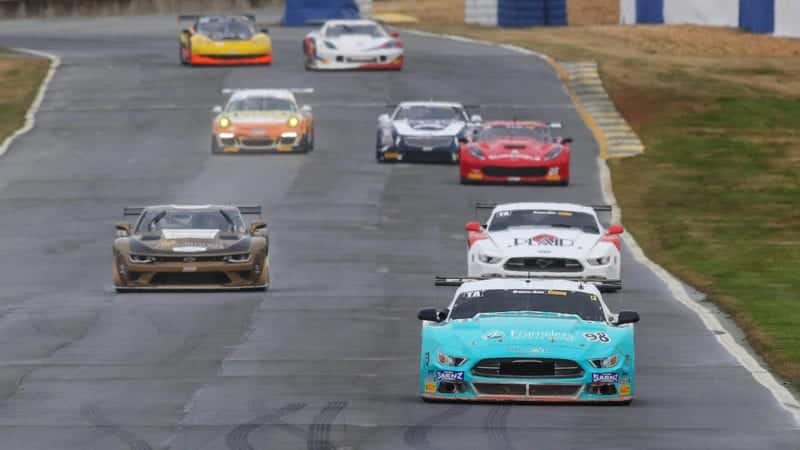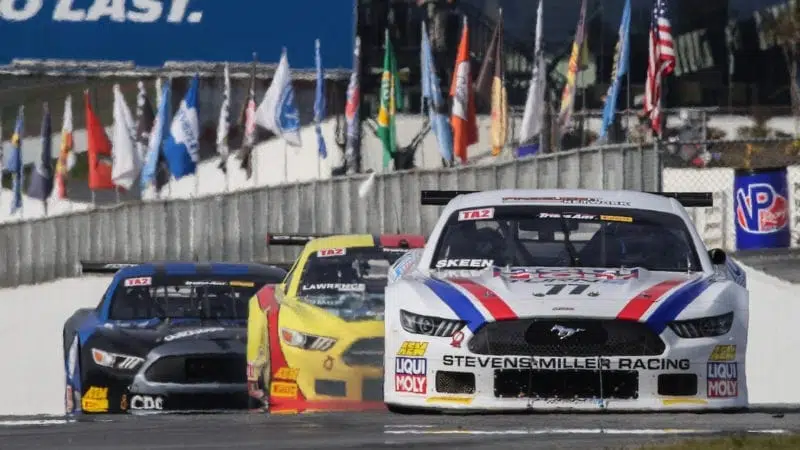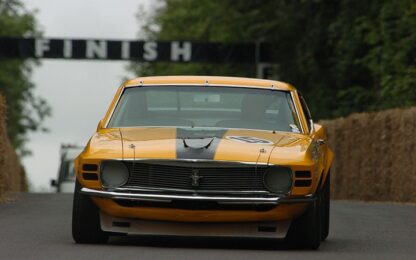With SCCA Pro Racing continuing to sanction races and provide operational support, the series has grown slowly but steadily. Trans Am now features six classes. The most popular is the second-tier category, TA2, which features a semi-spec rules package for cars making nearly 500 horsepower. Because it’s so affordable, TA2 has attracted a slew of newcomers – including NASCAR tyros looking to hone their road-racing skills – and the action on track has been fierce.
But TA remains the king of the Trans Am jungle. The 358-cubic-inch engines generally come from NASCAR shops that continue to crank out mega-hp carbureted motors. (Fuel injection is permitted only in NASCAR’s top-level Cup series.) The chassis feature live rear axles and bodywork based on current Mustangs, Challengers, Camaros and Corvettes. The cars go from 0 to 60 in 3 seconds and max out around 190 miles per hour.
“They’re staggeringly powerful but incredibly well balanced with good mechanical grip and not overly reliant on downforce,” Dyson says. “Managing the torque is probably my biggest assignment every time I get in the car. It’s very much the old school mentality of driving: If you’re not fast enough, you’ve got to get better.”

Old school, mega-hp TA class cars lead the way
Trans Am
The outrageous grunt coupled with last-gen technology might lead you to believe that the cars require a heavy hand (and foot). Quite the opposite, according to Said.
“They take a lot of finesse,” he says. “They’re not nimble, like a GT3 car. But when I’m driving a GT3 car, I feel like a butcher. There’s no heel and toe. There’s not enough horsepower to really get into trouble. You just go as deep as you can in the brake zone and push on the pedal as hard as you can to get in the ABS, then you just slam on the gas pedal and let the traction control do all the work. If I drove a GT3 car like I drive a Trans Am car, I’d be a second slower.”
This year, the championship looks likely to be a shootout between Dyson, who won the season-opener at Sebring, and defending champion Ernie Francis Jr., who’s seeking his eighth (!) consecutive title. Alas, the series doesn’t have a TV deal, even in the States, but races are streamed live and broadcasts can be viewed after the fact on YouTube. Not always easy to find, but worth the effort if you want to see road racing stripped down to its essentials.



